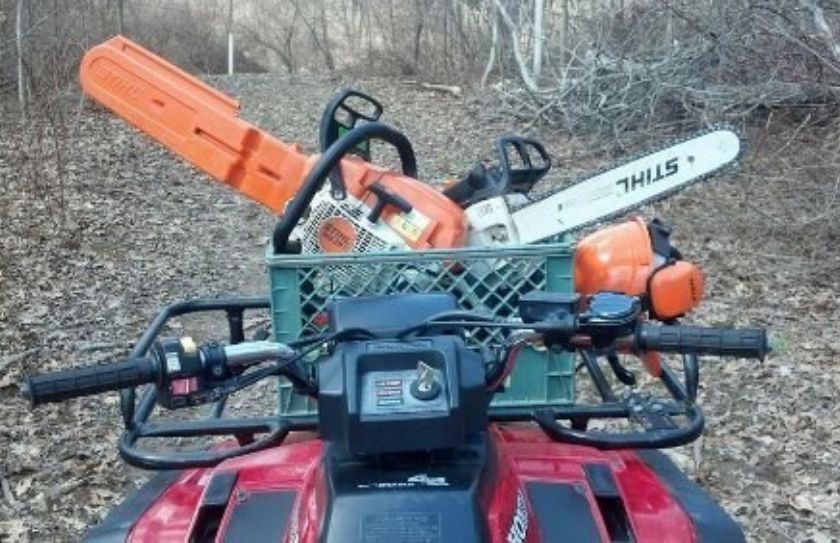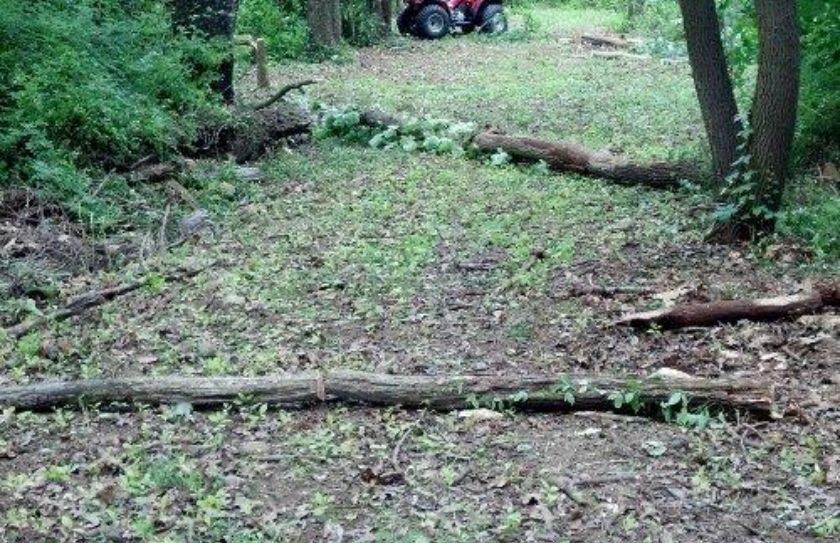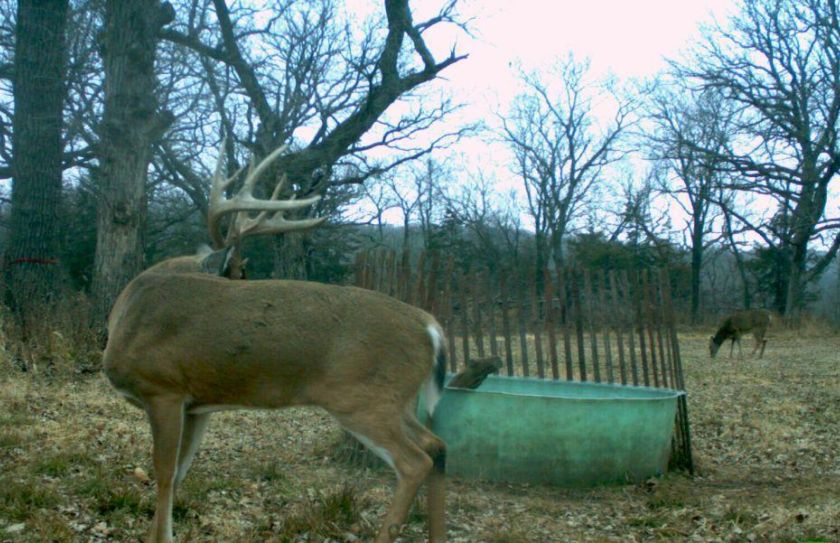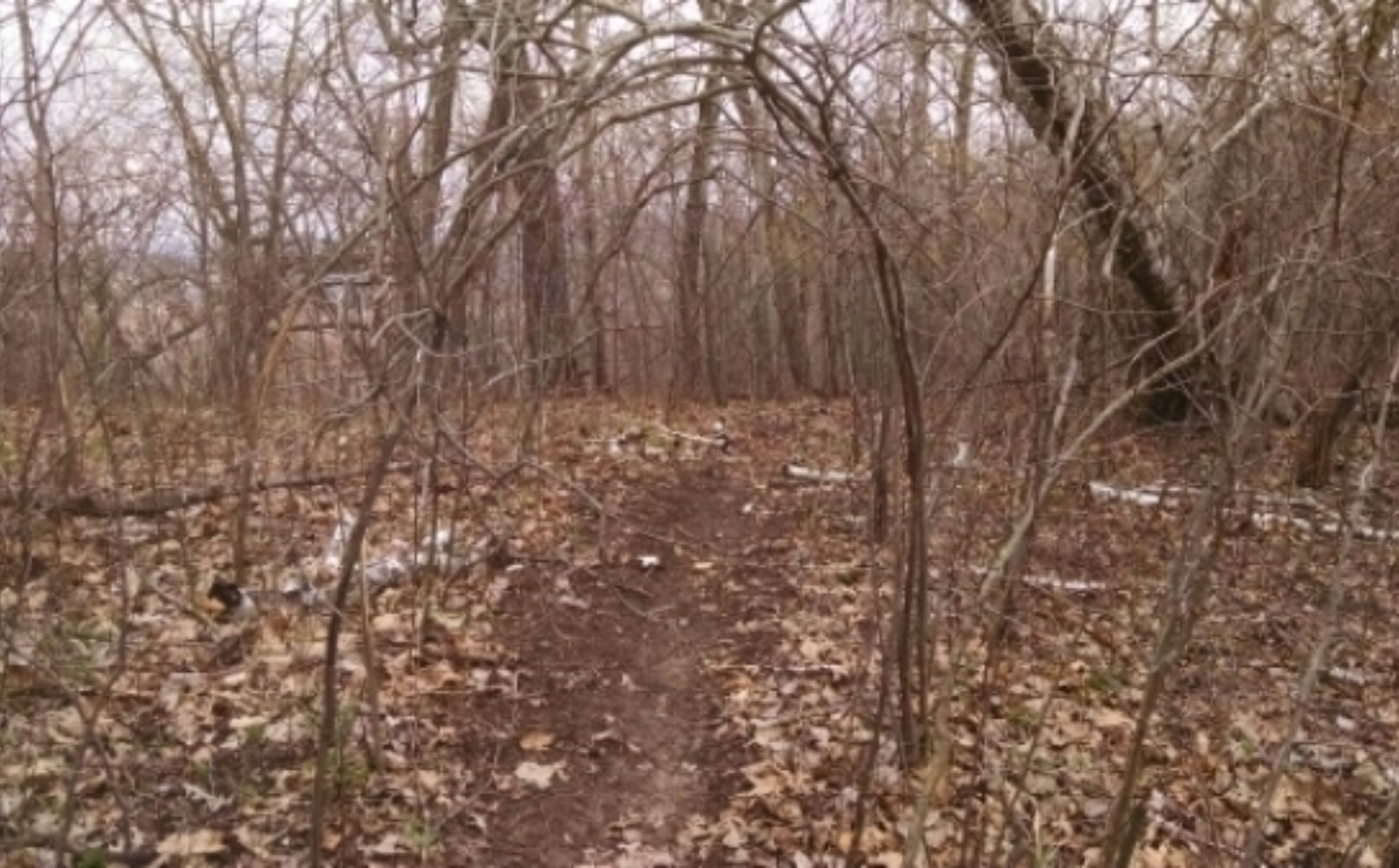
There may be no better way to bring a deer to your bowstand, than by creating a deer corridor right to your bowstand! Have you tried to create one? For more of the basics of building a corridor, check out my latest article on creating Chainsaw Travel Corridors for Deer. This will provide you the "nuts and bolts" for creating a deer corridor, including links to past corridor articles as well! But for this article, I really wanted to discuss a very critical element to making sure that the deer corridor that you create, is the right fit for you land.
Although the concepts of deer management are the same anywhere a whitetail roams, there is a vital balance that needs to be assessed for each an every habitat creation that you can install on the land that you hunt. Feel free to click on each of the following deer habit concepts for a more complete description of the steps needed to insure that you achieve an accurate balance for your habitat and hunting efforts:
1. Buck and Doe Bedding
2. The Annual Whitetail Habitat Shift
3. Natural Hunting and Habitat Improvements
4. Food Plot Balance
5. Core and Non Core Mature Buck Strategies
The process of creating a deer corridor is no different at all; you need to make sure your habitat creation fits the proper balance for your land!

*Above is a picture of a "Narrow and Tight" corridor that has it's place in limited situations, within a minority of deer habitats. Below is a moderately sized deer corridor that fits the majority of deer lands across the country.
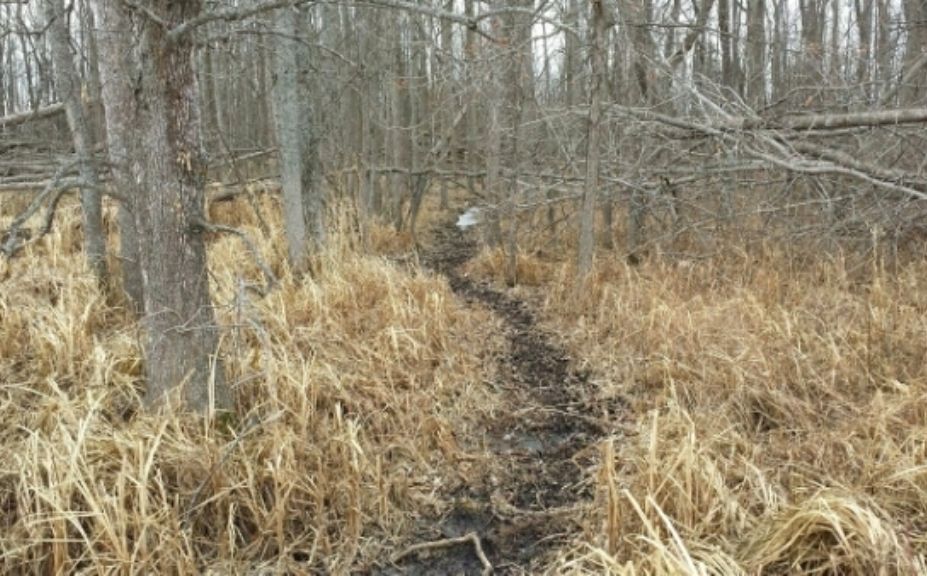
Narrow and Tight Deer Corridor Strategies
Is your land located in a high percentage agricultural region featuring zero to minor topographical changes and 10-20% or less of total cover vs. ag? Then a more confining and narrow corridor may be for you. Within coverless ag regions, deer are forced to live within close proximity with each other. This isn't what they prefer, but instead it is the only choice that they have. A way to minimize negative aspect of deer being sandwiched together is to more closely compartmentalize your habitat improvements. This means heavily screened, small and compact bedding areas, less intrusive food plots and of course, the possible need for narrow and tight deer corridors. Here are a few strategies:
1. By clearing a 1-2' wide deer trail that connects bedding to feeding, bedding to bedding or feeding to feeding (including a waterhole within the mix if needed on your land) than you have the start of your deer corridor. I recommend that you cut through logs, remove branches and even apply a ground-clear herbacide to aid in your efforts. With the exception of wet or rocky areas, if you can drive a mountain bike through your deer corridor...it is clear enough.
2. Next, hinge trees 4-6" + away from and perpendicular to your deer corridor. If you have a large tree that will fall the opposite direction that youn intend, either leave it alone, or cut it, and clear out the log that is blocking the trail. The Habitat Hook hinge cutting tool is an absolute must-have for creating a deer corridor!
3. Finally, as in the picture at the beginning of this article, use younger growth by pulling across the corridor at chest to head level and tie to create a "hoop" across your deer trail. Although deer will rarely tunnel through cover this tight and narrow in the majority of whitetail habitats across the country, they will do so within coverless ag regions.
4. Keep it clean! Hinge-cuts fail, and hoops create additional growth across your deer corridors, so it is important to make sure to maintain your trails to make them usable during the months of Spring and Summer.
As a note to this type of corridor, I rarely would recommend that you hinge trees across your deer corridor. I prefer a low maintainance approach to habitat management and 1 fallen hinge can completely plug an otherwise outstanding deer trail. Because of that, I prefer to hoop and tie, instead of hinge and hope.
Do you need to create a deer corridor that is this tight, narrow and compact? It's possible...but not completely necessarly on the majority of whitetail parcels. Deer love their space. They prefer to slip easily through the habitat with minimal obstruction, if possible. While traveling through 19 states over the course of my career while assisting clients in the design of their parcels I have seen dozens of corridors and bedding areas that were completely avoided because they were too narrow and constricting. I can't say that I have seen a more moderately sized deer corridor avoided, so when in doubt always take the more conservative approach. Literally, you can block-off a huge portion of your land if you create a corridor that is too tight and confining so be careful in your approach.
Moderately Sized Deer Corridors
This is more of a "one size fits all" approach. I recommend that you create zero hinge-cuts or hoops that will be create a canopy over the trail. If you think about it, in natural conditions deer rarely travel through areas that resemble a tunnel, complete with a canopy. And that goes for bedding areas too! I believe a canopy does have it's place, but that place represents a low % of deer parcels across the entire range of whitetails. What are the steps for creating a moderately sized deer corridor? The first steps are the same as above, but there is a very important 3rd step:
1. Do nothing else.
A moderately sized deer corridor requires very little effort to maintain, and that is a great for allowing you to spend more time on the priorities of stand placement, scouting, stand access routes, food plots and the overall design of your land to allow you to enter and exit without the deer knowing that they are being hunted.
The more cover that you have, the less deer will tolerate being confined. Deer corridors need to appear more natural, and less confining as the % of actual deer holding habitat increases. Another factor is overall deer numbers. What is the # of deer per acre of cover in the area including and directly surrounding your land? As the number of deer per acre of cover increases deer will tolerate a progressively increasing level of confinement in both their travel and bedding areas.
It is up to you to make sure that type and size of the deer corridor that you are creating fits the desires of the local deer herd.
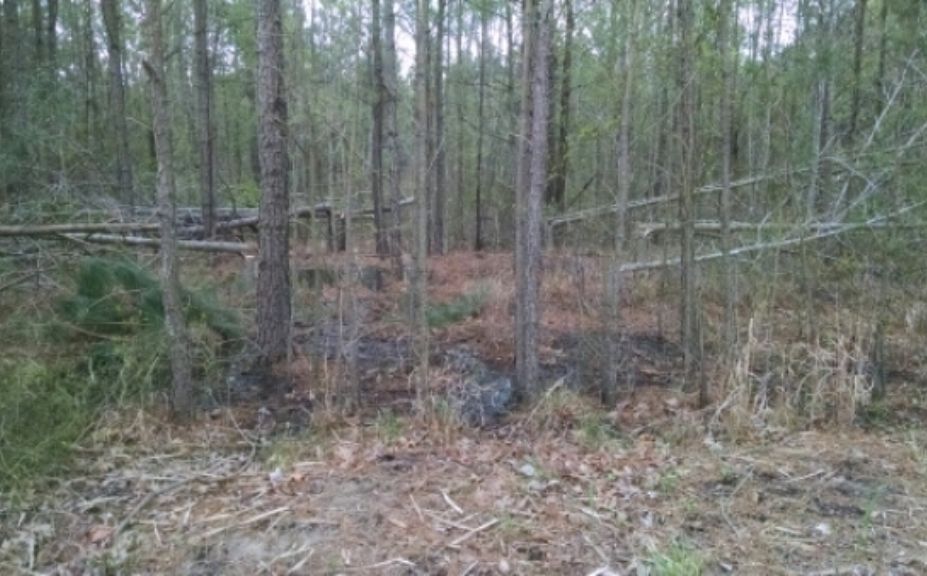
Conclusion
Hooped and Hinged canopies have their place when creating deer corridors. In fact another great use for hooping a corridor is when you can't cut your timber due to an MFL plan or overall timber value. By using iron wood or even prickly ash, you can still use growth to provide needed cover within open mature hardwood settings to create a great sneak trail for deer.
When in doubt...natural is always the best way. If your deer corridor improvements blend within the local habitat conditions, you are headed in the right direction. Just make sure to always assess the size and type of corridor needed on your land before ever ripping the pull cord on your favorite chainsaw.
